The flowers of crapemyrtle grace summer landscapes for weeks in warmer zones of the country. Often called the lilac of the South, they were introduced from Asia and have flourished in the U.S. since the American Revolution. Their resilience, adaptability, and show-stopping blooms have made them a staple in gardens across the South and beyond.
Over time, hybridization has expanded the options for gardeners, offering everything from towering trees to compact varieties fit for containers. The U.S. National Arboretum played a pivotal role in this evolution, introducing hybrids in the 1960s and ‘70s—many named after Native American tribes. This collection boasts a striking range of sizes, from the petite Pocomoke at just 20 inches to the majestic Natchez at 30 feet.
Other hybrid programs followed, such as the Razzle Dazzle series, developed by Michael Dirr’s breeding program in Georgia, with compact cultivars that reach just 3-4 feet. The Early Bird series from Southern Living Plants grows 5-8 feet, making them perfect for modern home gardens. Meanwhile, the Magic Series by First Editions fills the gap with intermediate-sized crapemyrtles growing 6-10 feet, featuring high disease resistance.
With all these choices, why has the pruning of crapemyrtles become one of the most contested topics in horticulture?
The Battle Over Crapemyrtle Pruning
Improper pruning of crapemyrtles is so widespread that it even has a name: crape murder. Steve Bender of Southern Living popularized the term, and it’s hard to find a horticulturist who disagrees with his sentiment. But how did this practice begin? And why does it persist?
I have theories. The earliest hybrids were vigorous, often growing much taller than expected. Homeowners planted them in spots where, years later, their size became a challenge—blocking views, creeping over rooftops, and tangling with power lines. In response, many began hacking them back aggressively, believing they had no other choice.
Then there’s the role of well-meaning but untrained landscape maintenance crews. With work slowing in the winter months, perhaps they found pruning crapemyrtles an easy task to keep crews busy—regardless of whether it was necessary or done correctly.
But the result of such harsh pruning? Instead of graceful, sculptural trees, we get stunted, awkward stumps. I see the consequences all the time.
A Gardener’s Heartbreak
There were certain plants I admired daily—living landmarks along my commute. One day, I drove past a local restaurant and gasped in shock. Two of the most beautiful crapemyrtles I had admired for years had been topped. Once stately 12-foot trees, they had been brutally cut down to six feet.
Not long after, it happened again. At a nearby hotel, mature crapemyrtles were chopped back. Admittedly, they were growing under utility lines—so pruning was necessary—but the result was disheartening. It would have been better to replace them with smaller varieties suited to the space. Instead, what remained was an eyesore. And despite years of regrowth, they never fully regained their original glory.
The Right Way to Prune
So, how do we prevent this unnecessary destruction? By spreading awareness. Educating homeowners, landscapers, and garden centers about the range of crapemyrtle sizes available is key. Choosing the right variety for the right space eliminates the need for aggressive pruning.
That said, when pruning is necessary, here’s how to do it right:
When to Prune:
Late winter or very early spring is ideal since crapemyrtles bloom on new growth. In my Zone 9a garden in central Texas, this is typically from late February to early March.
How to Prune:
Maintain the natural form – Light, selective pruning improves airflow, enhances blooms, and preserves the tree’s character.
Thin the crown – Remove branches smaller than a pencil’s diameter, also crossing branches, cutting them back to the main stem or branch.
Eliminate dead or weak growth – Remove any branches that have grown at awkward angles or splay across other stems.
Control basal growth – Cut away any shoots sprouting from the base to maintain a clean, tree-like structure.
Tools to Prune:
When pruning crape myrtles, I rely on three essential tools to ensure clean and precise cuts. You can find these by clicking the underlined tool name below:
1. Hand Pruners: Ideal for trimming smaller branches and stems up to ¾ inch in diameter. I prefer bypass pruners, which function like scissors, providing clean cuts that promote quick healing. A highly recommended option is the Classic Bypass Hand Pruner, known for its durability and sharpness.
2. Loppers: For branches that are too thick for hand pruners, loppers offer the necessary leverage to cut through limbs up to 1½ inches in diameter. The Corona Bypass Extendable Handle Pruner is a versatile choice, featuring a compound cutting action that makes it easy to handle thicker branches.
3. Pruning Saw: When dealing with branches larger than 1½ inches, a pruning saw becomes indispensable. The Corona folding pruning saw is lightweight and efficient, making it ideal for cutting through thick, dense wood with ease.
Using these tools ensures that each cut is clean, promoting healthy growth and maintaining the natural beauty of your crapemyrtles.
And the most important question—Do crapemyrtles need pruning to bloom?
The answer is no.
Lessons from an Untended Garden
There’s an old house in my town, abandoned for decades, with a row of massive, untamed crapemyrtles. They stand nearly 20 feet tall, watered only by rainfall, untouched by human hands. Yet every summer, they bloom. Their flowers may not be as abundant as in years past, but they persist.
And then there are the forgotten cemeteries scattered across the South, where ancient crapemyrtles still put on a show. No pruning, no irrigation—just time, resilience, and the will to bloom.
There’s a lesson in that.
Like the crapemyrtle, we don’t need harsh interventions to grow. Sometimes, all that’s required is the right environment, patience, and an appreciation for the beauty that unfolds naturally.
So, let’s honor the legacy of these remarkable trees. Let’s plant wisely, prune thoughtfully, and cultivate a garden—and a life—rooted in respect for what was, what is, and what will bloom in time.
As an Amazon Associate, I earn from qualifying purchases. This email may contain other affiliate links too for your convenience




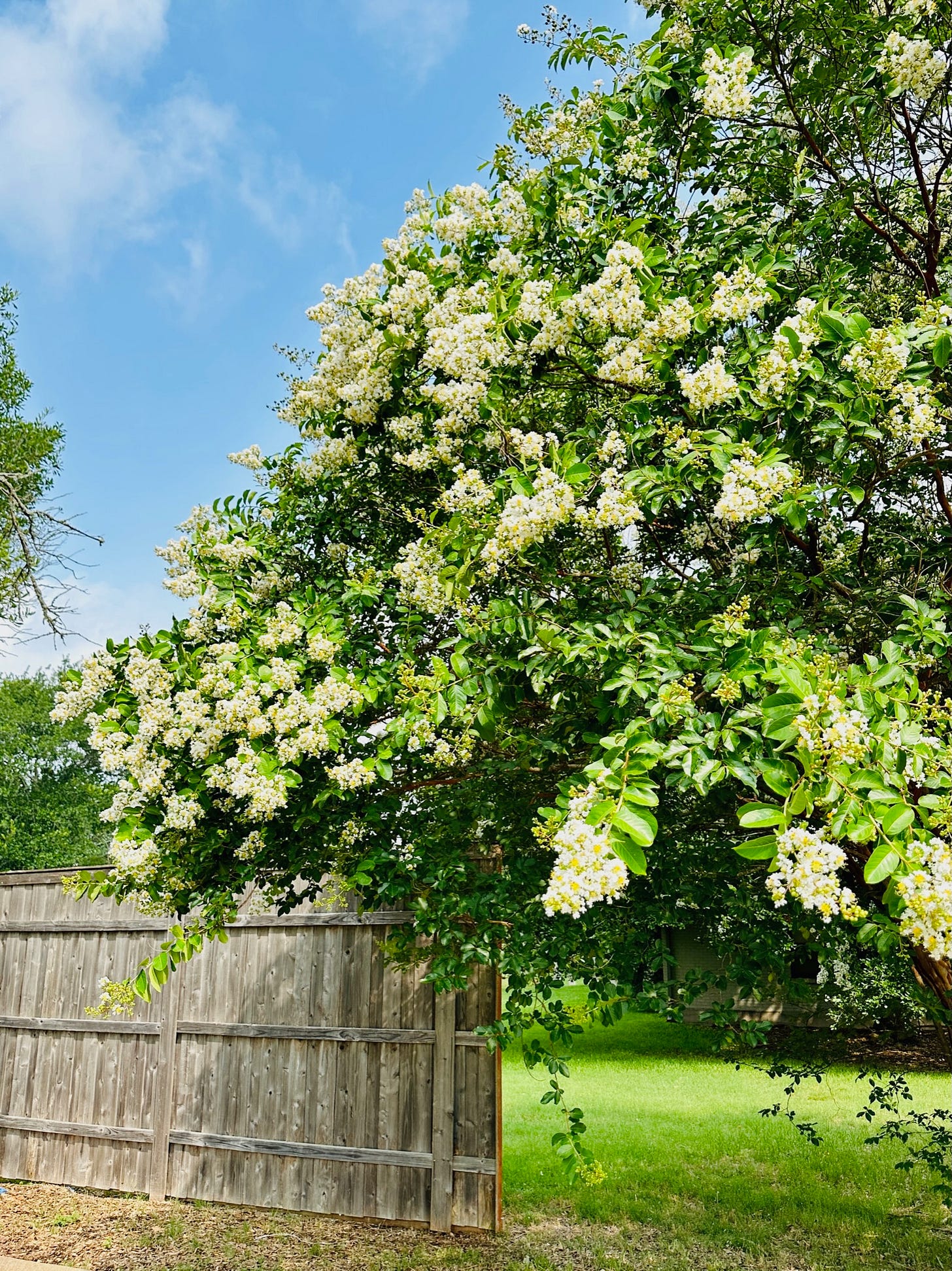
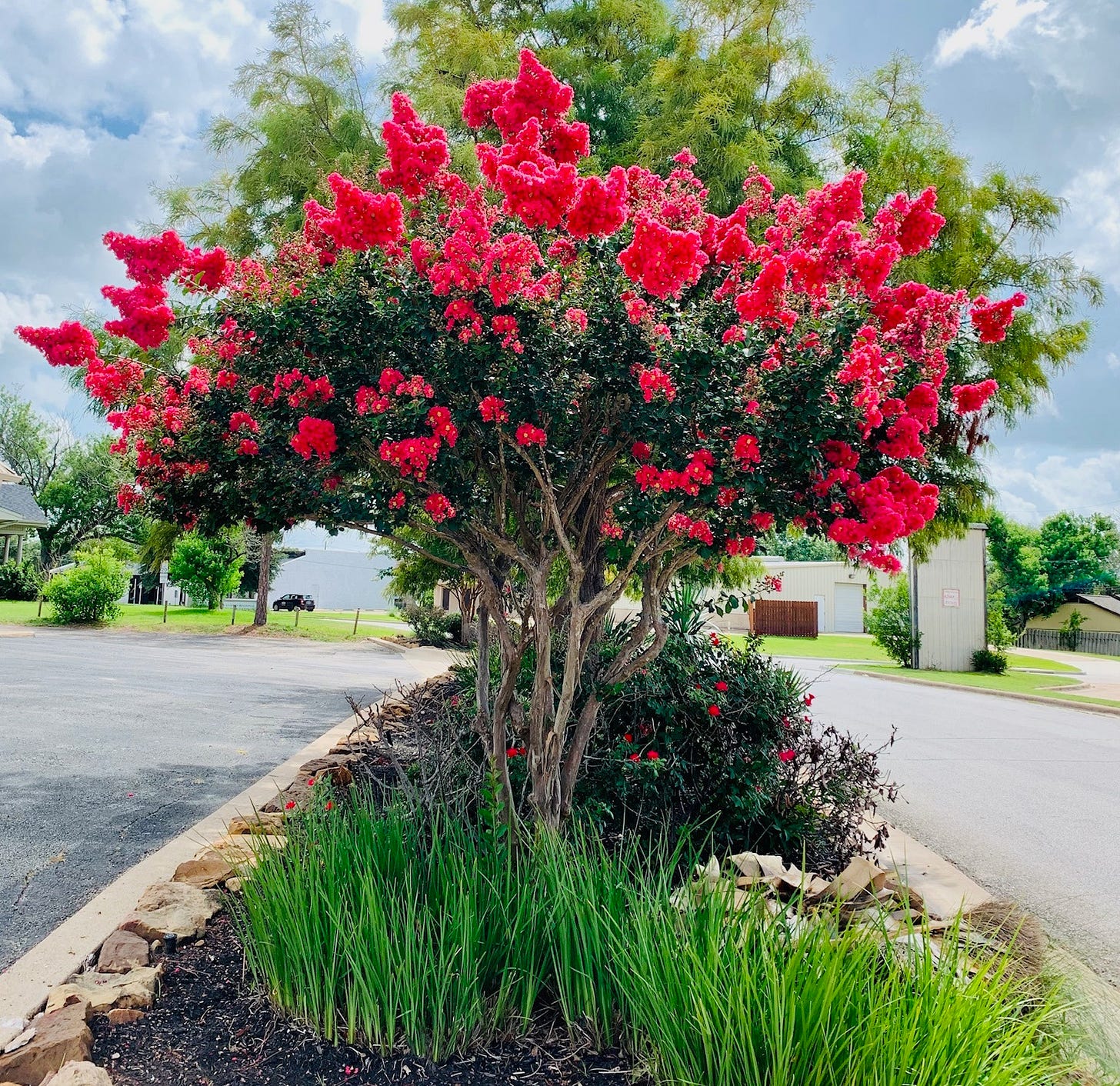
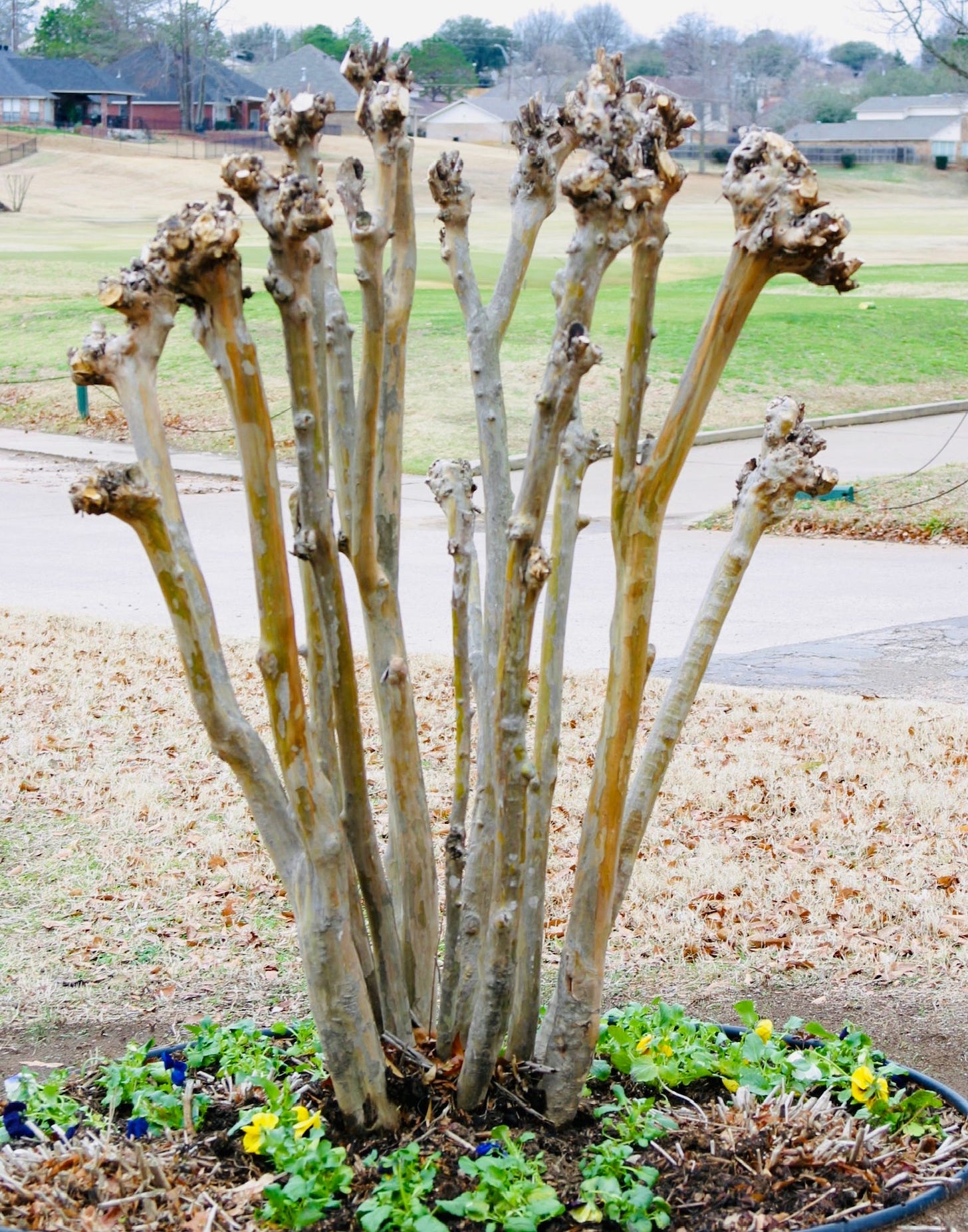
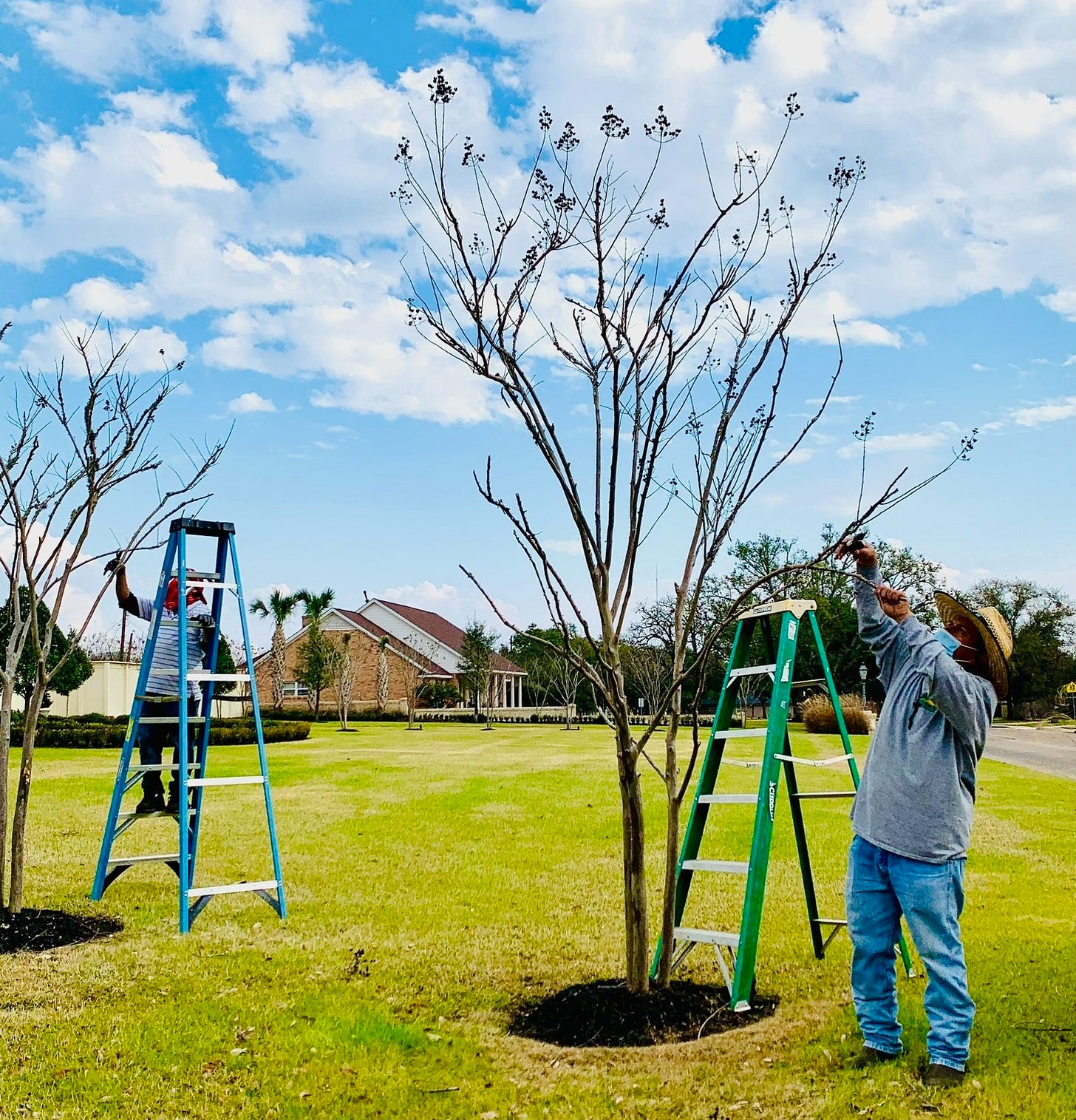
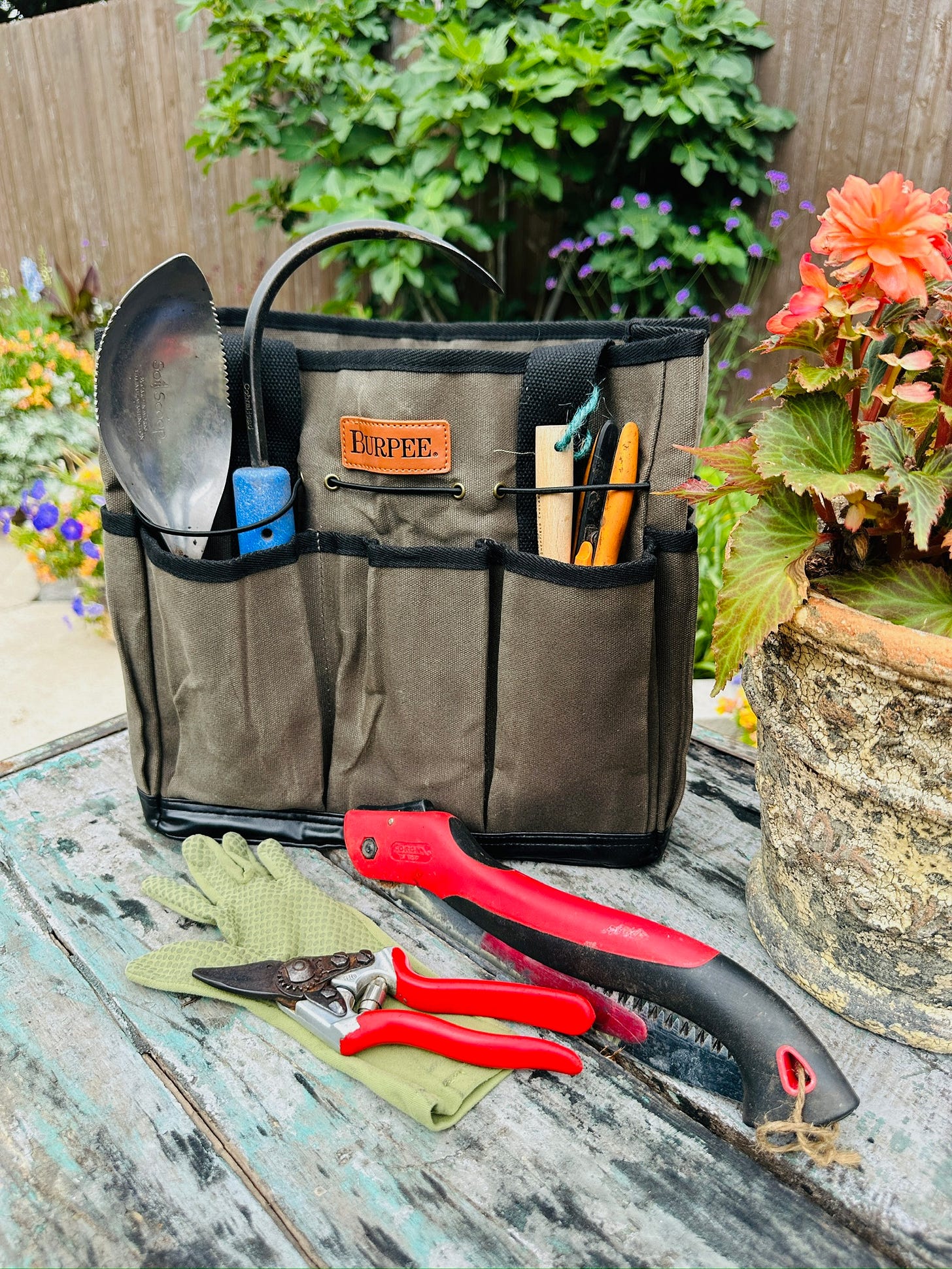
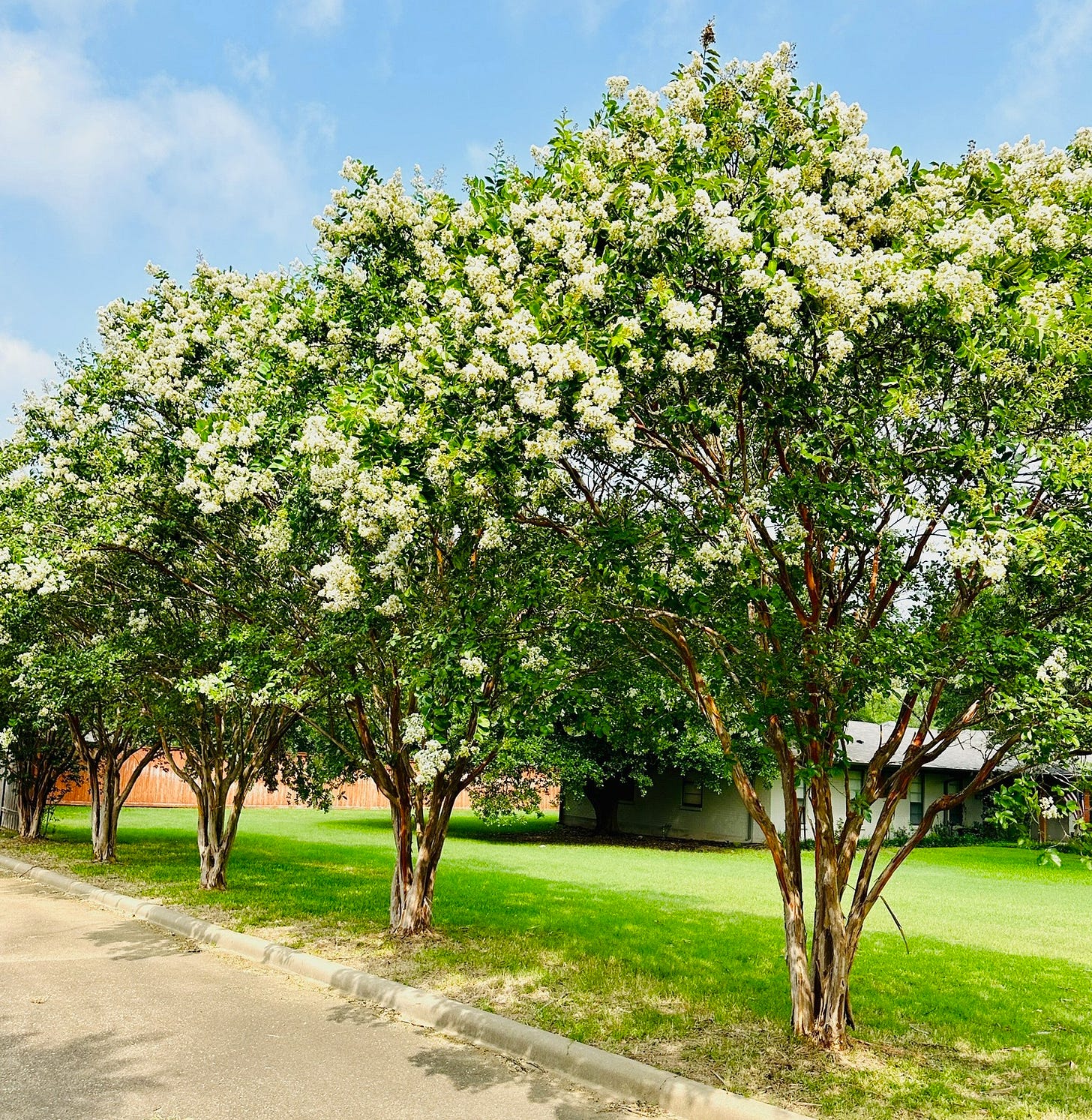
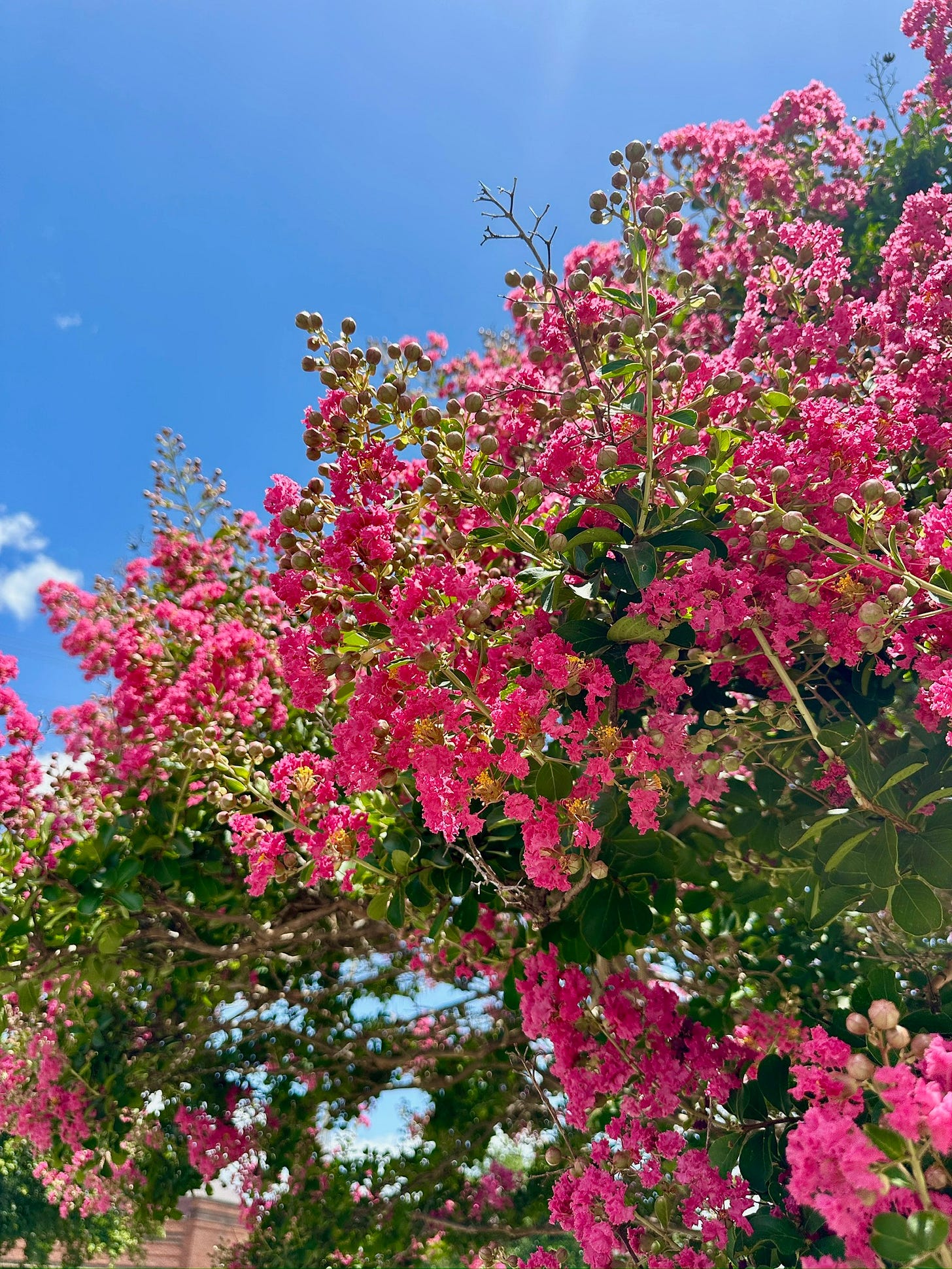
They're such beautiful trees!! I don't know that I've ever seen any in California - do they grow here? We just planted a jacaranda in hopes for some beautiful blooms like the crapemyrtles get - our old house here had a camellia tree/bush that had amazing blooms, I might have to plant one of those in our current yard.